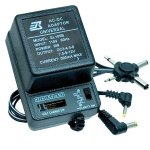- Joined
- Jun 14, 2012
- Messages
- 5
- Points
- 0
Hosed the lasers circuit board trying to repair a disconnected part but was able to salvage the 3 prong laser diode and it should work fine. I am just wondering if I could just hook it up to a household "Battery Eliminator" (Fully adjustable from 3V - 12V. It was a Ray brand.. Ebay laser. Any way to do this without wrecking it, or spending any $ lol. Could I harvest the circuits from an old CDRW burner or DVDRW and just solder the diode onto that? Or is it just as simple as soldering my battery eliminator wires on there? Any help would be awesome, thanks guys. This site rocks by the way, very informative 






